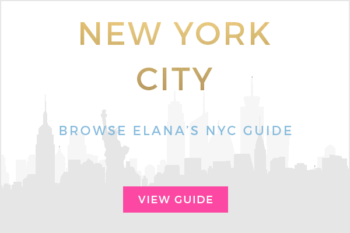Tag Archives: career
-
How to Make a Vision Board
A vision board is a powerful visualization tool to help you organize and embrace your goals.
-
7 Tips for Decorating a Home Office You’ll Want to Work In
Working from home is a great opportunity, so long as it’s done correctly. By creating a home office space you love, you might actually enjoy working.
-
30 Day Challenge: Keep a Work Journal
This month's challenge is to keep a work journal.
-
How to Build Your Personal Brand On LinkedIn
I originally wrote this for the Likeable Media blog.
The world’s largest professional network, LinkedIn, has opened its publishing platform to a select group of its 277 million members with plans to expand the capability in the near future.
In today’s official announcement, LinkedIn’s head of content, Ryan Roslansky, stated that the move will provide members with “a powerful new way to build their professional brand” on what he calls, “the definitive professional publishing platform.” This user generated content will be published to the member’s profile, subsequently disseminating the information to their network and followers. LinkedIn will then use its vast amount of user data and post engagement to, with an algorithm, distribute the articles to a wider viewership. Before today, the ability to publish long-form posts was limited to members of the popular and prestigious Influencer Program, which includes individuals influential within their industry, such as Richard Branson, Bill Gates, Martha Stewart, and our own Dave Kerpen. Now, talented authors who write posts that are highly engaging may be able to join these ranks without being, say, a Fortune 500 CEO or the President of the United States.
The main point of differentiation between this publishing platform and others, including WordPress, Facebook, and Pinterest, is that LinkedIn is directly tied to a professional identity. This change, along with the acquisition of Pulse, is indicative of the LinkedIn team’s larger mission of helping professionals. This expanded democratization of thought leadership is certainly a giant leap toward that goal. With its publishing platform, LinkedIn is democratizing thought leadership by providing a new and unique outlet for people to build their personal brand, share advice and insights, and be regarded as an industry expert.
So what are you waiting for? Start writing.
What are your thoughts on LinkedIn opening up its publishing
-
Blog Better: How to Use Blogging to Build Your Personal Brand
It was ten a.m. on a Sunday morning. I was in a crowded spin class with my Blackberry resting precariously on the water bottle holder. Suddenly, over Kelly Clarkson’s Stronger, the Blackberry blasted its blaring bell. I was on call for the weekend. I jumped off the bike and walked outside of the room muffling the sound of the blasting music. No, I wasn’t being called into surgery because I’m a world-renowned neurologist. I had just graduated from college and was working as a paralegal. I called my manager back and learned that I had to go to the office to prepare binders of key case documents for attorneys leaving for trial later in the week. That was the moment I decided to start a blog.I missed writing and having a creative outlet and a blog seemed like the perfect solution for filling both voids. On the subway to work that Sunday morning, I scribbled down potential names for my blog before settling on the name: The Preppy Post Grad. I started writing blog posts on the weekends and scheduled them to be published during the week. As I was checking brief citations, compiling velo-bound documents, and preparing an abundant supply of binders, posts would go out about topics I was passionate about and interested in. When I started my blog, I never imagined that anyone other than my closest friends and family would read it and I certainly never imagined that it would help me get hired for new jobs, but both happened.
I was sitting in a Town Car at 3 a.m. after a long day at the law firm when I noticed that a company named Levo League had followed me on Twitter. I started reading their articles and found them to be pertinent to my own experience of navigating the transition from college to cubicle. I sent them a Direct Message asking how I could get involved and I soon became an ambassador, a voluntary role for a start-up organization that I hoped would succeed. As an ambassador, it was my job to help promote the company before launch. I went above and beyond by writing about Levo League on my blog. When I wrote a post comparing Levo League to a Birkin bag, the public relations team forwarded it to the founders and they invited me in for a meeting. I was offered a full time position a few months later. I had unwittingly, yet successfully, leveraged my blog to get a great job and this would not be the last time that blogging helped me get a job or opportunities to work with brands and bloggers.
I learned firsthand that blogging, social media, and other elements of cultivating a personal brand can not only help someone get hired for a job but also help them to become positioned as an expert in a particular field or topic. For example, when I started writing blog posts regarding my observations about sorority membership as a catalyst for career success or my love of interior design, I became someone people turned to for advice on both topics.
Even something as subtle as the words we choose to describe ourselves can have a marked effect on how we are perceived by others. In Carla A. Harris’ book, Expect to Win: Proven Strategies for Success from a Wall Street Vet, she writes about learning that her colleagues didn’t think that she was tough. After this realization, she started describing herself as tough as much as possible for three months. She would say things like, “‘You better make sure it’s right because you know, I’m really tough.’” At the end of three months she overheard a colleague lamenting that Carla was tough and would critique a project harshly. Think about the words you would want people to use when describing you and start using your blog and social media as an outlet for demonstrating those characteristics. After hearing this story, I took out a piece of notebook paper and wrote down the qualities I would want people to describe me as and I started to incorporate those words into my social media profiles, blog description, and individual posts. After doing this, I began to hear more and more people describing me with those characteristics. Of course, your actions and behaviors must reflect the characteristics you describe, but this is a good method of helping to select and reinforce how you wish to be and, in fact, are perceived by others.
Blogging allows anyone a space to write about anything. Share what you are passionate about, whether it’s fashion, sports, nutrition, motherhood or an industry, and don’t be afraid to change, add topics, and grow. You are multifaceted. Your blog and social media presence will be more interesting (and relevant to more people) if you share the many things that make you, you.
-
Networking, Sorority Style: How Floating in College Helps You Network Now
As a recent graduate, I had only been at my first job for a few days when I attended my first company networking party. When I returned home that evening, my roommate asked me if I was nervous at my first networking event. Surprisingly, I wasn’t.I’m new to the professional world. I’m new to networking– especially networking that could land me a job. So why was it that I didn’t feel nervous in a totally new situation where the pressure was on to be gracious, intelligent, on point, and still figure out how to remember everyone’s name? I realized that it wasn’t a new task. I was a member of a sorority in college, and sorority recruitment taught me all of the skills I needed to rock a networking event.
Here are the top seven skills I learned in sorority recruitment and use in my career.
1. The basics–it all starts with a handshake:
Your handshake starts the introduction so make sure that it is a strong handshake. Here are some tips from Etiquette International’s 6 Tips for a Good Handshake: “it is firm but not bone-crushing,” “lasts about three seconds,” and “includes good eye contact with the other person.” Eye contact is important throughout the conversation. Lack of eye contact may be perceived as boredom.
2. Don’t fidget or cross your arms:
If you have a tendency to fidget when you are nervous clasp your hands together. Don’t cross your arms because it conveys that you are not interested, don’t want to be talked to, or may be nervous, or frightened.
3. Floating:
In floating, the person who wants to enter the conversation signals by tapping the team (or sorority) member on the shoulder. The person engaged in the conversation introduces you to the other conversation members and lets you know what they were talking about so you can join in! Sound familiar? If you were part of a sorority, it probably is. But this basic exercise you learned in college is just as applicable in real, grown-up life. Try it out– you’ll be delighted at the results.
4.































